When Carla Ward took over Midlands Division One side Sheffield United Ladies in 2018 on an interim basis, she could not have thought that within a matter of years, she would be in charge of a WSL club — and one that has ambitions of challenging at the top of the division.
Ward’s five years in management have been far from straightforward, with her navigating plenty of hurdles along the way. However, she has risen to each new challenge with aplomb and has now been rewarded for that with her leading an Aston Villa Women squad boasting some of the finest players in the league.
Like the situations that she has been in, her tactics have varied from club to club, with her having a clear blueprint for how she wants to play the game but often having to adapt those ideas to suit what was available to her at the time. This tactical analysis will explore those changes in greater detail, identifying how her ideas have altered during her five years as a manager and how she has built up a commendable game plan as her career has progressed.
Sheffield United Women
Carla Ward’s coaching career began when she joined Sheffield United as a player/assistant manager to then-boss Dan O’Hearne, in a move that many saw as a coup for the club, due to her vast experience in higher tiers of the women’s football pyramid. When O’Hearne stepped down in the January after her arrival, she was seen as his natural successor.
She has talked openly in interviews since then about the difficult choice that she faced at that point, with her needing to opt between hanging up her boots and committing to management or turning the chance down and elongating her playing career.
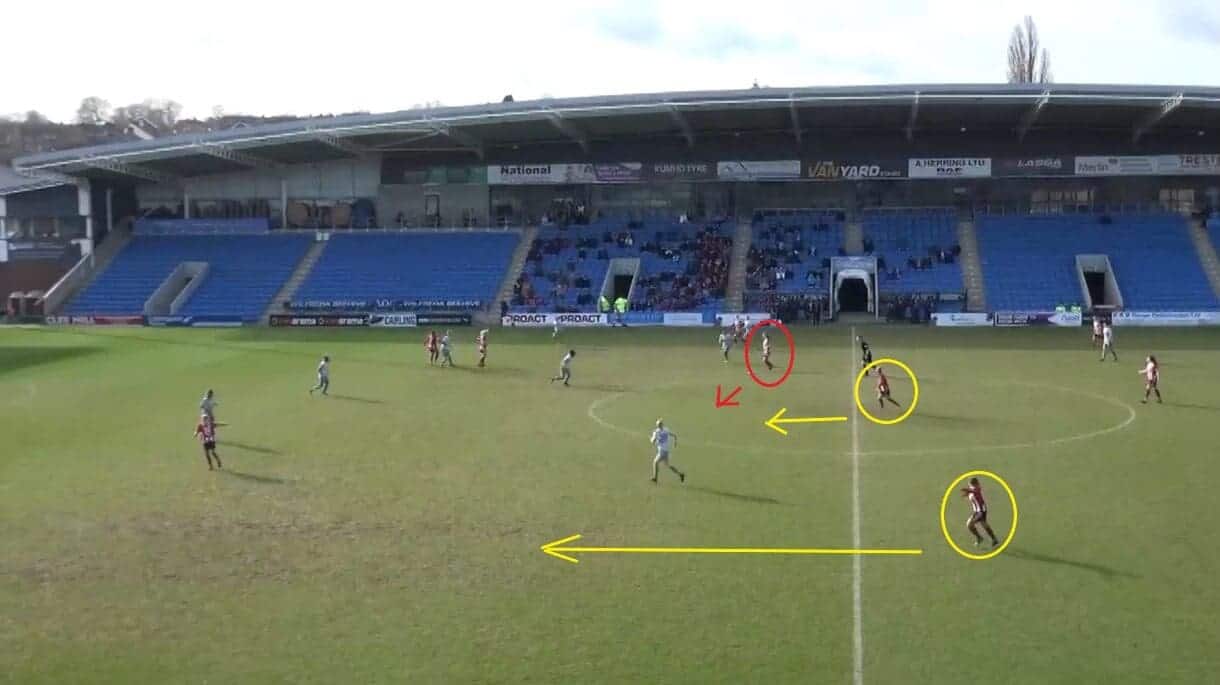
Ultimately, she decided to go down the coaching route and began to put her own stamp on the team with her own ideas; it immediately became clear that she had a desire to play a similar style to her own game, demanding that players be tenacious all over the field and constantly look to find spaces and cover as much of the pitch as possible.
This was particularly evident in their transitions, with them constantly trying to move the ball through gaps in the opposition’s lines and put them under pressure as often as possible.
However, playing this way did rely on players having the right level of tactical intelligence to enable them to read the game and know when to move the ball forward and when to be more conservative. This always takes time, regardless of what club it is or which league they are in. Nevertheless, Ward persevered with it and Sheffield United reaped their rewards, with Blackburn Rovers Ladies leaving space open here and allowing their opponents to play through them without hesitation.
The key point to make here is not that Sophie Barker, now back on loan at the club from Leicester City Women, edged forward to receive the initial pass ahead of its current position, but that Alethea Paul, on the near side of the field, made a simultaneous run that allows the ball to keep moving forwards and enables Sheffield United to transfer it behind Blackburn before they can drift across and react to the danger.
This is where the aforementioned intelligence is shown, and the fact that they averaged 55.33% of possession per match in that season and provided a continual test for their opponents was down to them executing moments like this with great precision.
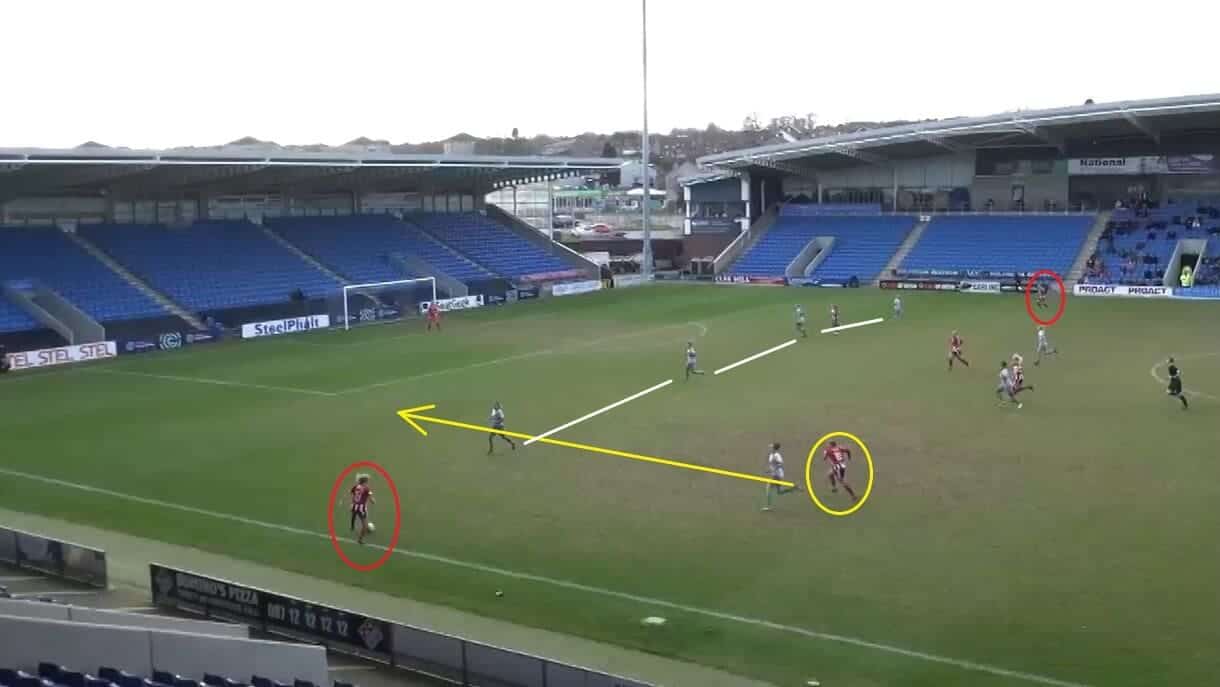
Another key aspect of Ward’s tactics at the club was the use of the wings, with her constantly asking her wide players to stay close to the sidelines and make the pitch as big as possible. By doing so, she wanted to stretch the opposition out, knowing that this would also contribute to gaps appearing in their lines that would allow her key threats, such as Jade Pennock and Maddy Cusack, to have space in which to work their magic.
However, that was only half of what she needed from those players, with her also requiring them, again, to be intelligent and recognise when the right time to pass the ball was, again making sure that the team was as potent in possession as it was possible for them to be.
In this case, Olivia Fergusson (now at Celtic Women) is the player in the wide role, with Paul running inside her, and what Fergusson does well here is that she edges slightly infield before releasing the ball, drawing the Blackburn player nearest her out of position and giving Paul a better chance of receiving the ball without being under immediate pressure.
Given that Paul ultimately set up Mollie Green, who was on loan from Manchester United Women at the time, to score, it was clear that these little details were key to Sheffield United’s success under Ward, and they reflected how her tactics were built on simple footballing ideas which were then executed to perfection.
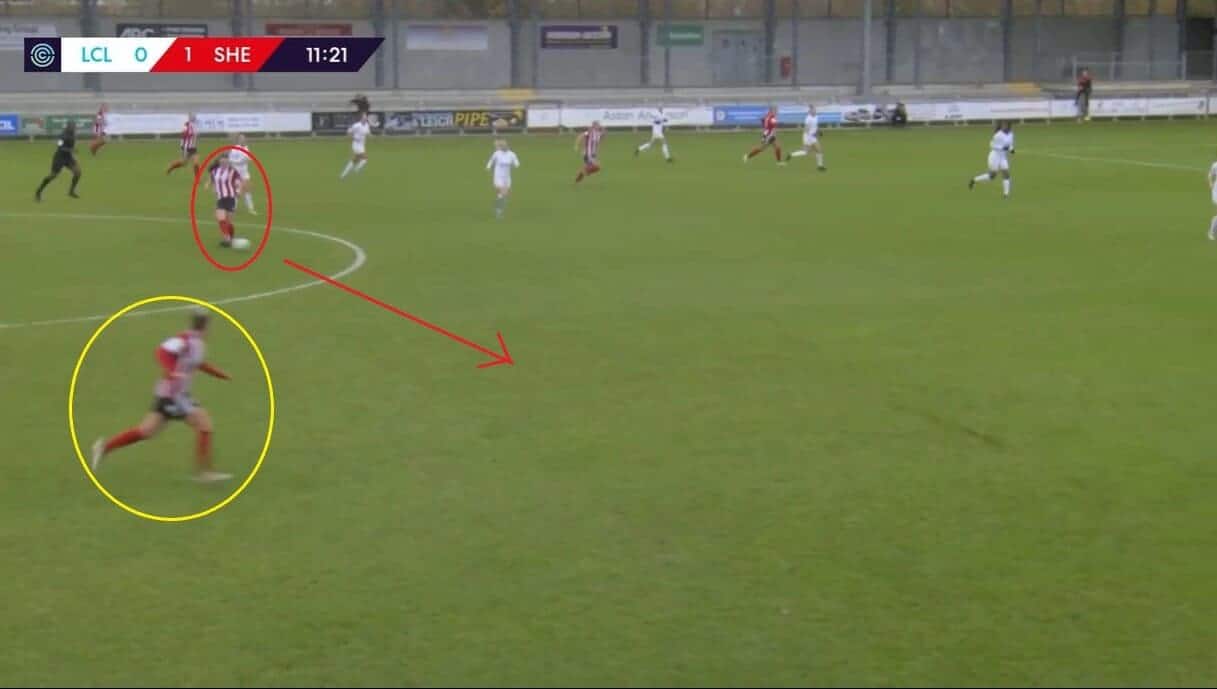
To play that way, though, Ward needed several key roles to be filled, and one of them was a deep-lying distributor. More often than not, that role was occupied by now-Leicester star Sam Tierney, who has demonstrated throughout her career that she thrives in a ‘6’ role and can be relied upon to move the ball around the field with deadly accuracy.
In this case, she has moved into the London City Lionesses half, which was rare for her, and has spotted the run of Barker through the middle, and it was her ability to make these quick decisions and find these players that were really key, allowing Sheffield United to push numbers up the field and create numerical overloads.
It isn’t hard to see why they averaged 3.25 goals in that campaign and ended it as the league’s top scorers on 46 when looking at the balance that they had in the midfield through Tierney that allowed them to stay in more advanced areas for longer periods of play.
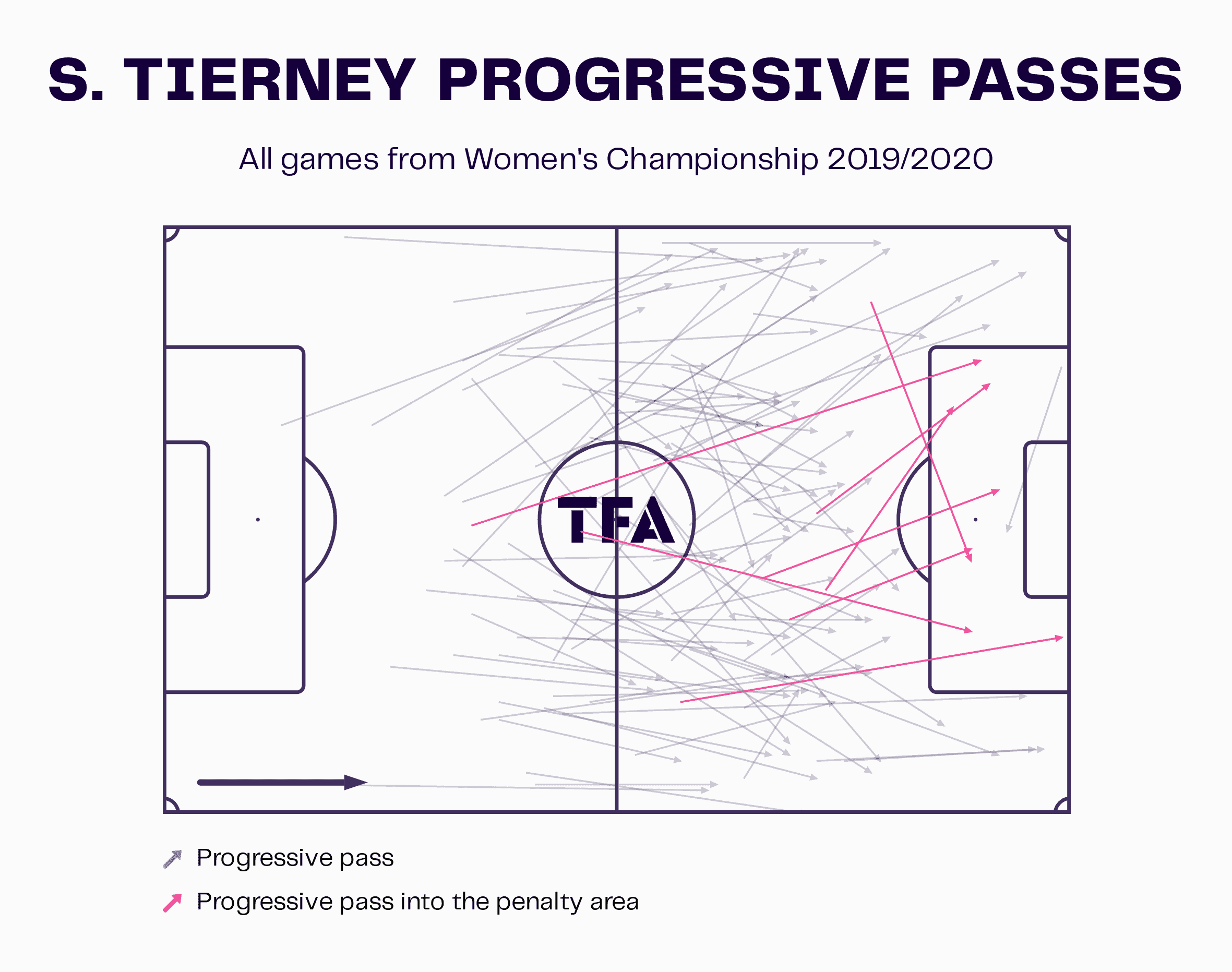
This graphic indicates just how important Tierney was to their ability to test their opponents, with her being responsible for almost all of their progressive play and ensuring that when they won the ball, they made the most of their opportunities.
The fact that a large percentage of the passes indicated on the map originated from inside her own half is also important to note, as it demonstrates how accurate she was given that she rarely moved into advanced positions — and that is a trait that has continued throughout her career and which Leicester, in particular, have relied upon during their current fight for survival.
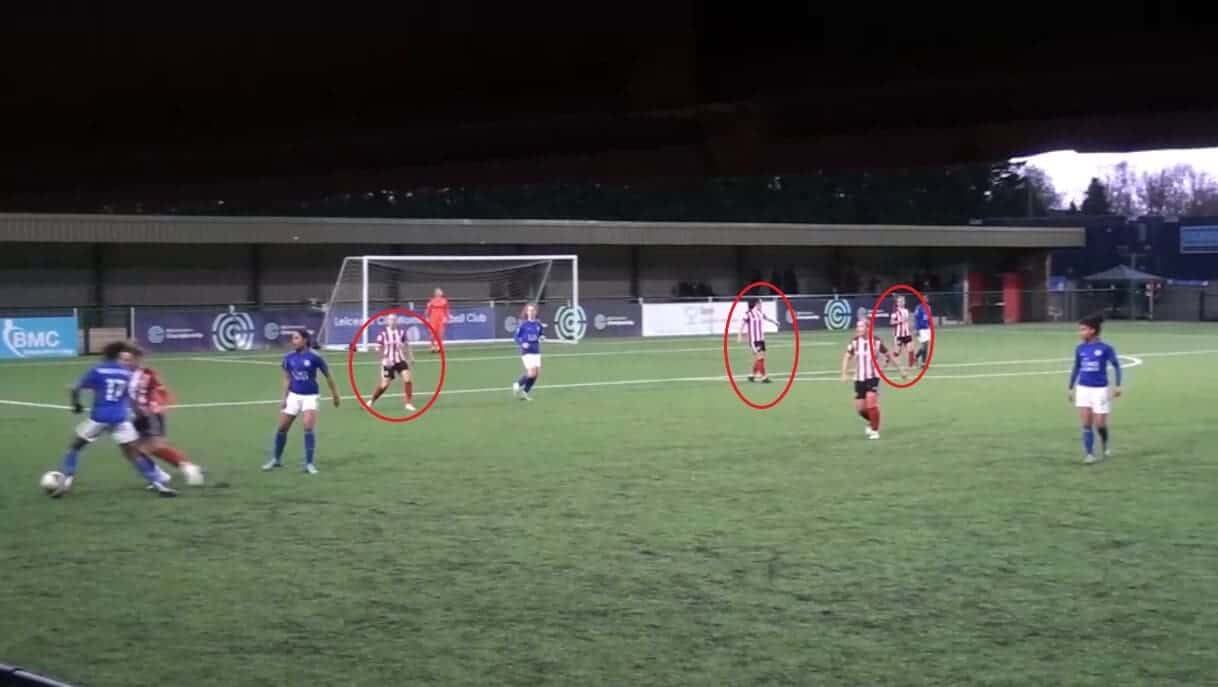
Again, the fact that Tierney was able to execute the role with such skill was down to the simplicity of Ward’s instructions, and that was also clear to see when Sheffield United lost the ball and needed to drop back into their own half to protect their goal.
In these situations, Ward wanted her full-backs to press opponents and challenge for the ball but also recognised that that would leave the centre-backs isolated and would create gaps in her defensive line that would make it easy for attackers to breach it. Therefore, Tierney was once again given a simple job on the field, with her tasked with dropping back and playing between the centre-backs, creating a back five structure as indicated here, and that then allowed the rest of the defensive tactics to fall into place.
The other benefit of setting up this way was that it freed up those in the central defensive position, in this case, Naomi Hartley and Greece forward Veatriki Sarri, to focus on closing down any potential passing options that the opposing side might look to use, and that was particularly important against Leicester here as they had pace in their ranks from the likes of Lachante Paul and Jamaica international Paige Bailey-Gayle.
Therefore, staying robust and focusing on winning defensive duels (they succeeded in 61.1% of them that season) was a key mantra that Ward instilled into her team, and it came through hard work on the training ground and players understanding what was required of them.
Birmingham City Women
The 2019/20 season was eventually curtailed due to the pandemic, with promotion and relegation at all levels of the women’s game decided on a points-per-game basis. Sheffield United, who had been one of the main second-tier title contenders, were placed second and missed out on promotion to the WSL, with Aston Villa given that accolade.
Shortly afterwards, Carla Ward announced her departure from the club, with the board stating that “both parties had opted to go down a different path”, and she was later appointed as the new head coach of WSL strugglers Birmingham City Women.
However, things were far from ideal at the West Midlands side, with the team lacking support from the club’s hierarchy and only having eight senior players under contract, with Ward saying afterwards that many of them had not been in the right place, mentally, to play when she arrived.
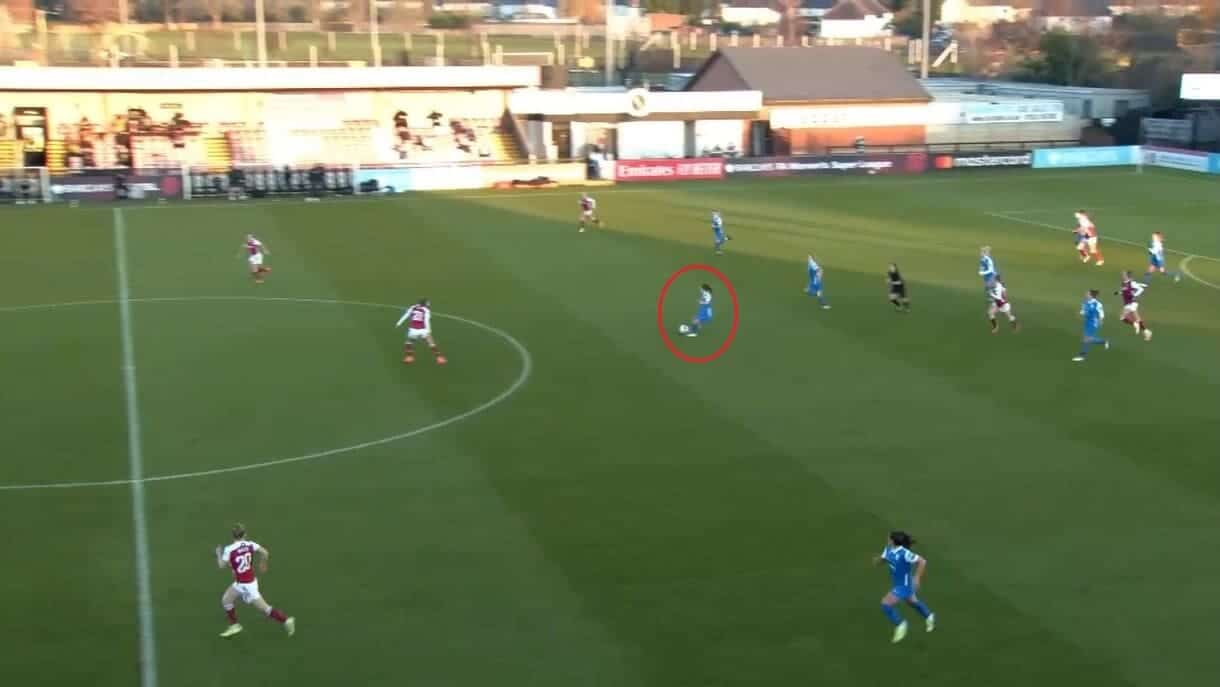
Her first task was therefore to build a squad, hold a pre-season and prepare the team for their opening game of the new season, all in the space of just three weeks. As such, she recognised that there would not be time to introduce the style of play that she had implemented so successfully at Sheffield United.
Instead, she focused on stripping everything back and playing a very simple, long-ball style of football that saw her new side focus on defending and not dominate the ball in the same way, with them only averaging 39.69% of possession per match before hitting teams on the break whenever they gained the ball.
One player who proved to be an essential part of that way of playing was Scotland midfielder Christie Murray, who joined after leaving recently-relegated Liverpool Women. Whilst she was an attacking midfielder by trade, Murray instantly slotted into the deep-lying distributor role that Ward was once again dependent on.
Time after time, her ability to play long balls up the field, as she is doing here against Arsenal Women, proved to be the catalyst for Birmingham to create chances in advanced areas, and her ability to find lone striker Claudia Walker in those spaces was one of the key features of Birmingham’s overall game plan.
Walker really benefitted from having Murray constantly locating her, with the striker being given plenty of opportunities to make runs behind opposing defences before they could close her route off, and their partnership was one of the main reasons that Birmingham, despite once again struggling at the bottom of the table and only averaging 0.81 goals per game, could never have their survival hopes written off.
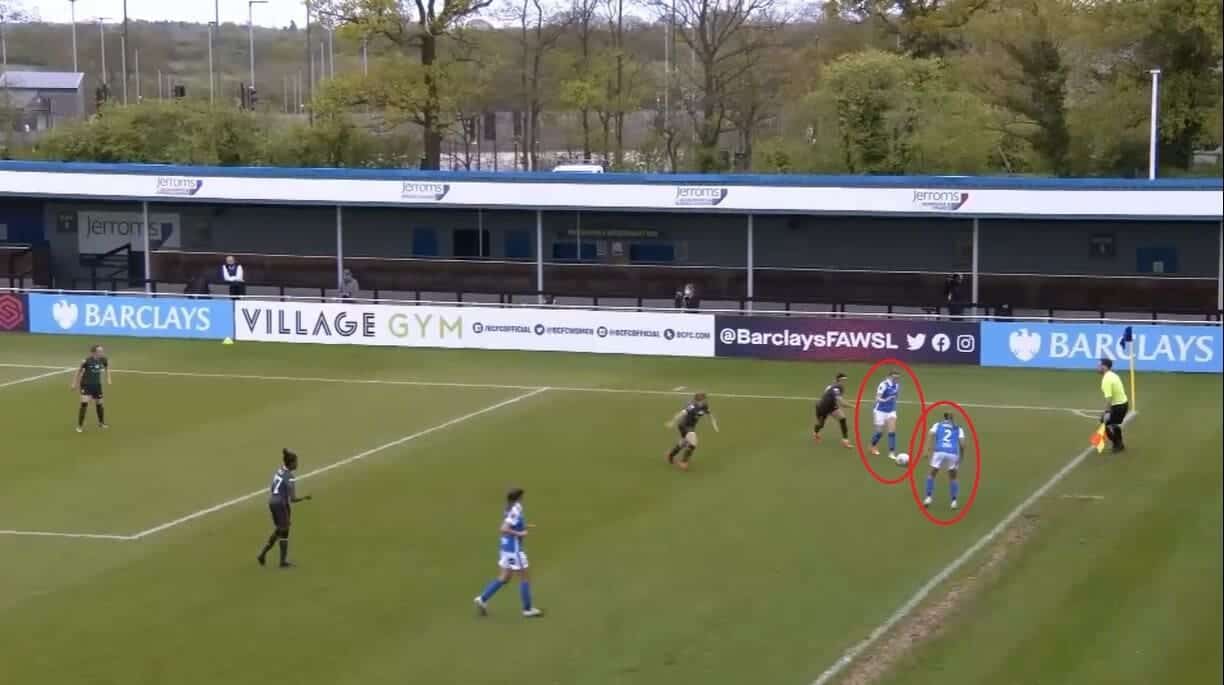
Having the right support on the wings was also something that Ward needed to find but as with everything else regarding the team, she had limited options available and needed to use what was already in the squad. With that in mind, she recognised early on that Sarah Mayling liked to push higher up the field and that fellow right-back Harriett Scott was a more combative player. As a result, she played Mayling almost as a right-winger and slotted Republic of Ireland international Scott in behind her.
This was a partnership that really worked for Birmingham, as it gave them two full-backs on the same side of the field at the same time in effect, allowing them to both create numerical advantages and beat opponents in the final third, along with having a better chance of stopping crosses entering their own box when the team was out of possession.
Here, Tottenham Hotspur Women’s Angela Addison and South Korea midfielder Cho So-hyun, the latter of whom was on loan from West Ham United Women that season, have pushed out to the wing to close Scott and Mayling down, but Birmingham have been able to play their way out of danger and deliver the ball into the box, showing the effectiveness of having both on the field together.
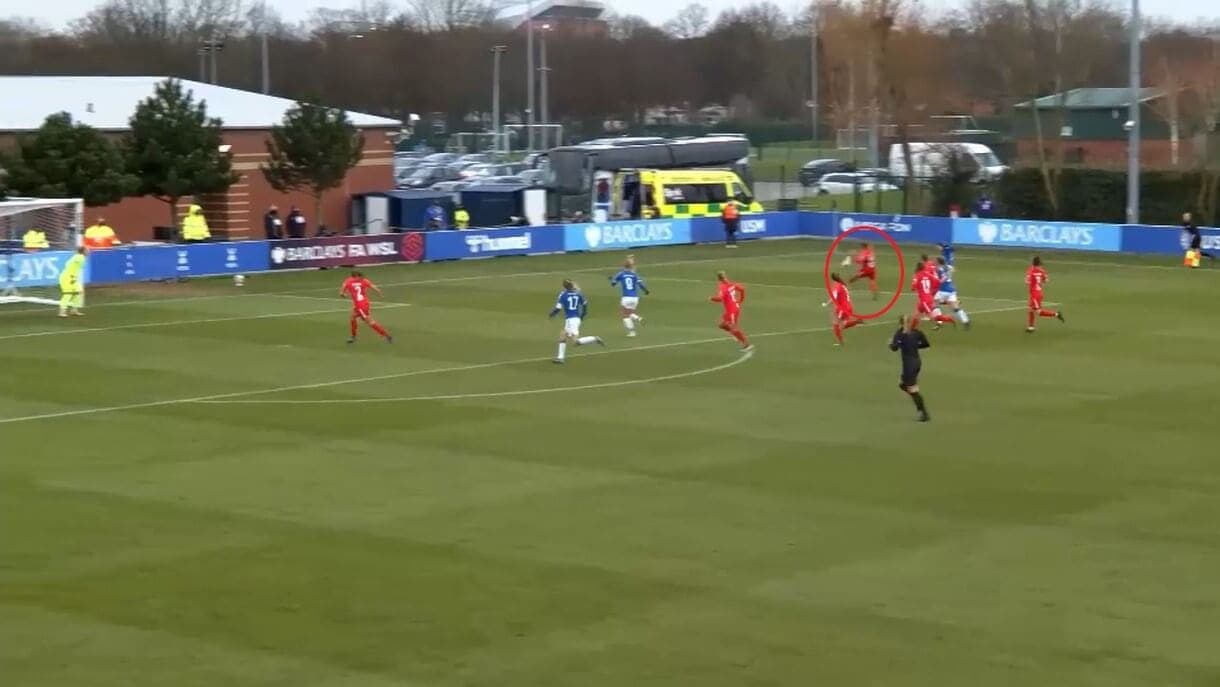
That situation shows how Birmingham used their full-backs in attack, and it was easier on the right to create opportunities to send the ball into the middle with them able to create these combinations inside the final third. However, the defensive side of things was less about flair and more about putting bodies on the line — there weren’t many who embodied that as much as Northern Ireland international Rebecca Holloway.
She had things a lot harder at left-back, with her not having the same level of support as Mayling and Scott provided each other with, and that meant that it was tougher for her to track back and move forward whenever her team were in transition. To her credit, the demands of the role that she was given in Ward’s game plan never phased her, and it was common to see her getting up the field and sitting back as needed, with her becoming one of Birmingham’s most dependable players that season as a result.
However, whilst her attacking play was as impressive as Mayling’s and Scott’s, it was her defensive qualities that really stood out, with her becoming a key obstacle for opposing sides to navigate at times and someone that was often responsible for thwarting opposing attacks.
Her ability to do what was necessary was particularly important against Everton Women, who were then under the management of now-Leicester boss Willie Kirk and who played a style of football that saw their wingers act as their primary threats, and that is true here too as Australia winger Hayley Raso has received a forward pass from Holloway’s fellow Northern Ireland international Simone Magill.
However, this is as far as the chance goes, with Raso looking to move the ball into the middle but unable to do so due to Holloway holding her ground and blocking it, and it was moments like this that typified Ward’s tactical outlook during her time at Birmingham, with her knowing that any chance of her side staying in the division relied on them not conceding goals and being hard to beat. The fact that they won 62% of their defensive duels and only conceded 1.96 goals per game in all competitions that season was down to moments like this when individual players quite literally put everything on the line.
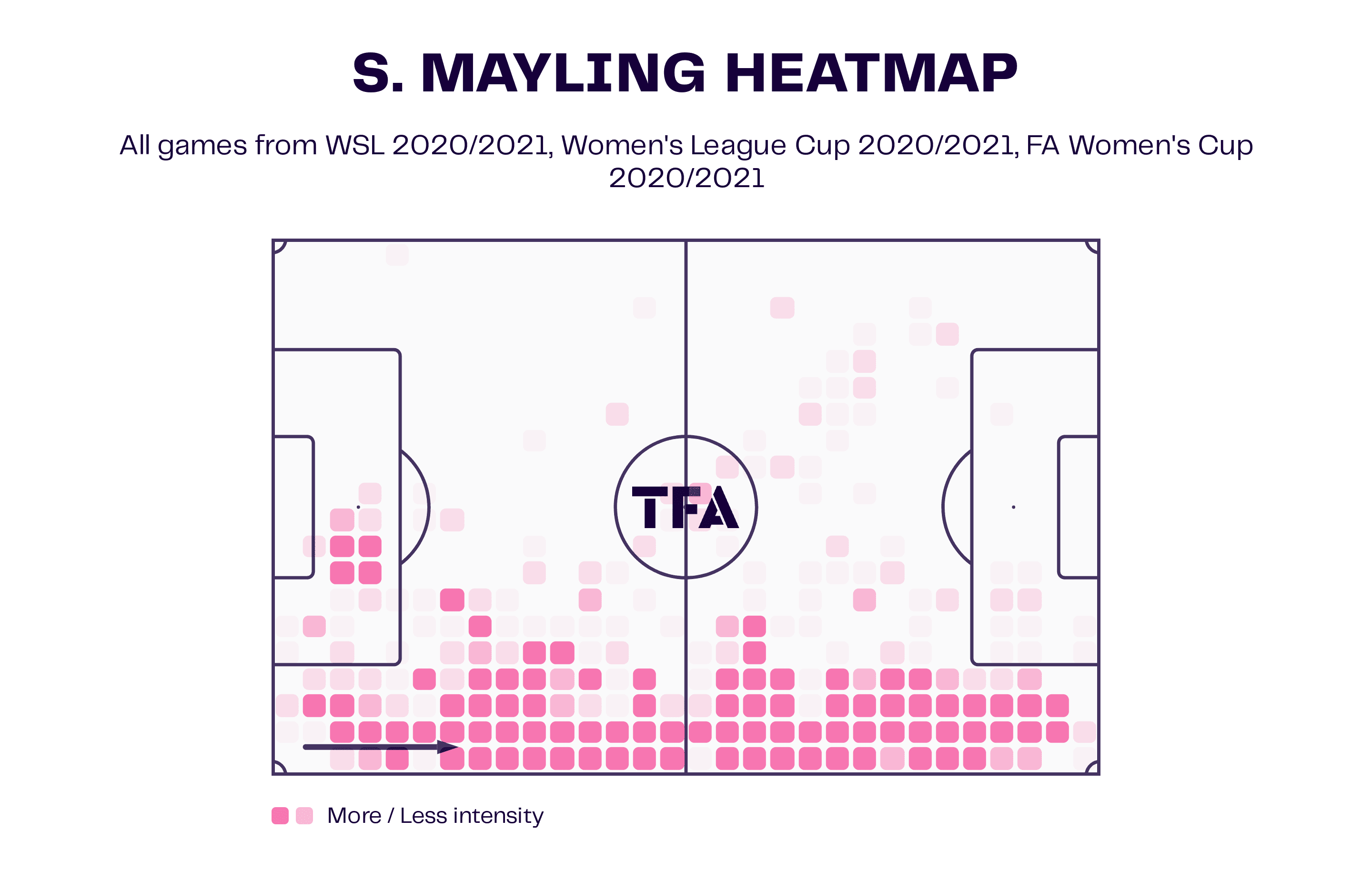
This graphic indicates the amount of ground that the full-backs on both sides were expected to cover under Ward, as Mayling’s heat map indicates. But Scott and now-Racing Louisville player Holloway covered just as much territory, and it shows just how vital their roles were in enabling Birmingham to be robust and then have options to find whenever they looked to play forwards.
Their positioning also meant that there was less opportunity for opposing players to isolate Walker and Mollie Green, who tended to play as a ‘10’ after joining Ward at the club on a free transfer, and that was another reason that those two players had so much space to run into whenever the ball did come their way. In that regard, it really was a team effort at Birmingham, with every player doing their part and knowing what they needed to do at each point in the game. Ultimately, this was down to Ward and the hard work that she was doing on the training ground with the team.
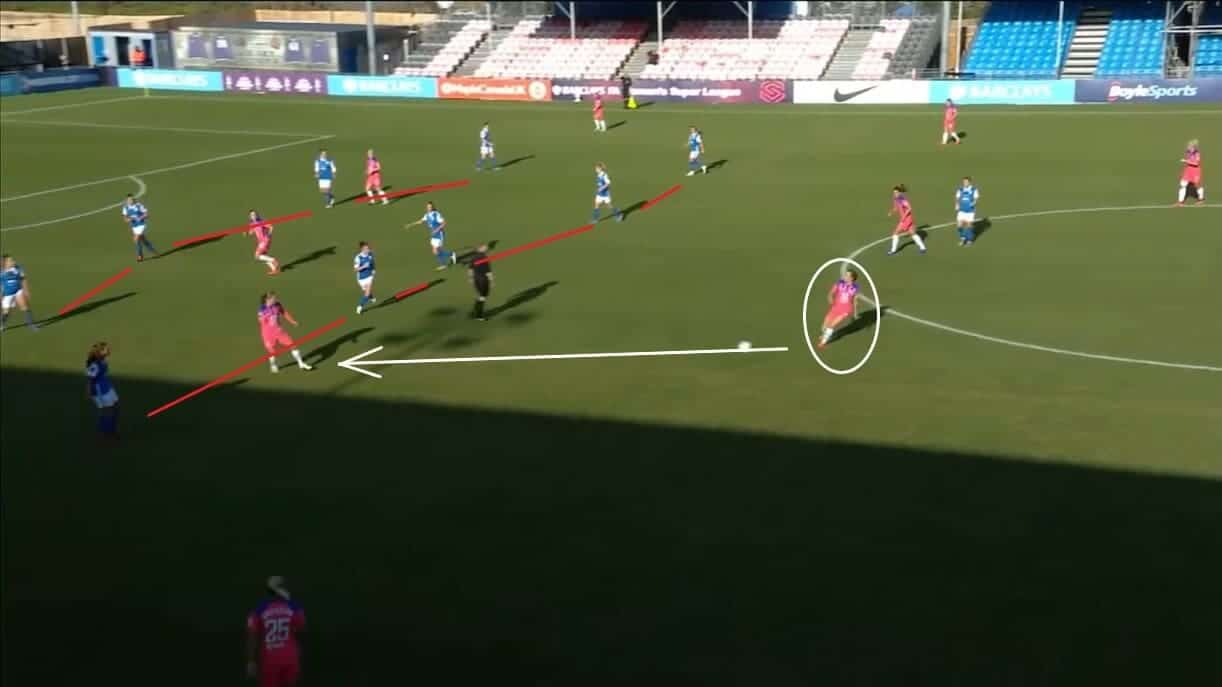
What did give them and their fans a lot of hope was their ability to make life difficult for the division’s top sides, with Chelsea Women just one of the teams who struggled to break them down. This was down to the team having a pre-planned structure and never once straying from it, and it was commendable that they never faltered in the face of so much pressure and stuck to the game plan because, with Chelsea continually probing them, as captain Magdalena Eriksson is doing here by passing to Norway forward Guro Reiten, it would have been easy for them to break ranks and lose their nerve.
These defensive efforts were largely marshalled by Scotland captain Rachel Corsie, who was on loan at the club for the first half of the season from Kansas City Current (then known as Utah Royals), and it was common to see her ushering the rest of the players to either move up the field or drop back as one and always making sure that there were never any gaps for their opponents to exploit. Birmingham played incredibly well in this game and very nearly took a point from it, but ended up with a 1-0 defeat that did them a huge disservice after the effort that they put in on the day.
Aston Villa Women 2021/22
Birmingham did manage to stave off the threat of relegation that season, which was a huge achievement for them and one that saw Carla Ward nominated for the WSL’s Manager of the Season award.
However, citing poor facilities and frustrations over the lack of support from the higher echelons of the club, she resigned after just a single year in charge and moved across the city to join Aston Villa, who had also been in the relegation scrap the previous campaign but who had big ambitions for the future of their women’s team and who were seemingly prepared to do everything possible to make them one of the best in the country, with major investment promised and the right level of backing pledged to help them grow.

Ward was also given full control of the day-to-day running of the team, with her being involved in transfers almost from the first time that she walked through the door. With that level of control, she had the ability to go back to the tactics that she had utilised so effectively whilst at Sheffield United, but to add the positive aspects of her experience at Birmingham.
That fusion was clear to see when looking at her initial setup, with her once again looking for a strong centre-forward who could hold opponents off and provide a physical presence at the top of the field and full-backs who could move forward and drop back as needed, maintaining the width but also providing opportunities for those in the middle to get on the end of.
Australia international Emily Gielnik was quickly identified as the right profile of player to lead the line, with her joining from Swedish club Vittsjö, but what Ward wanted to add to that setup was support either side of her. As such, she went out and found Switzerland forward Alisha Lehmann and recognised that, with her ability to stay wide and take on opponents in 1v1 duels and to cut inside with equal measure, as she has done here against Reading Women, she would be the perfect player to support Gielnik and ensure that Aston Villa could increase their overall attacking threat.
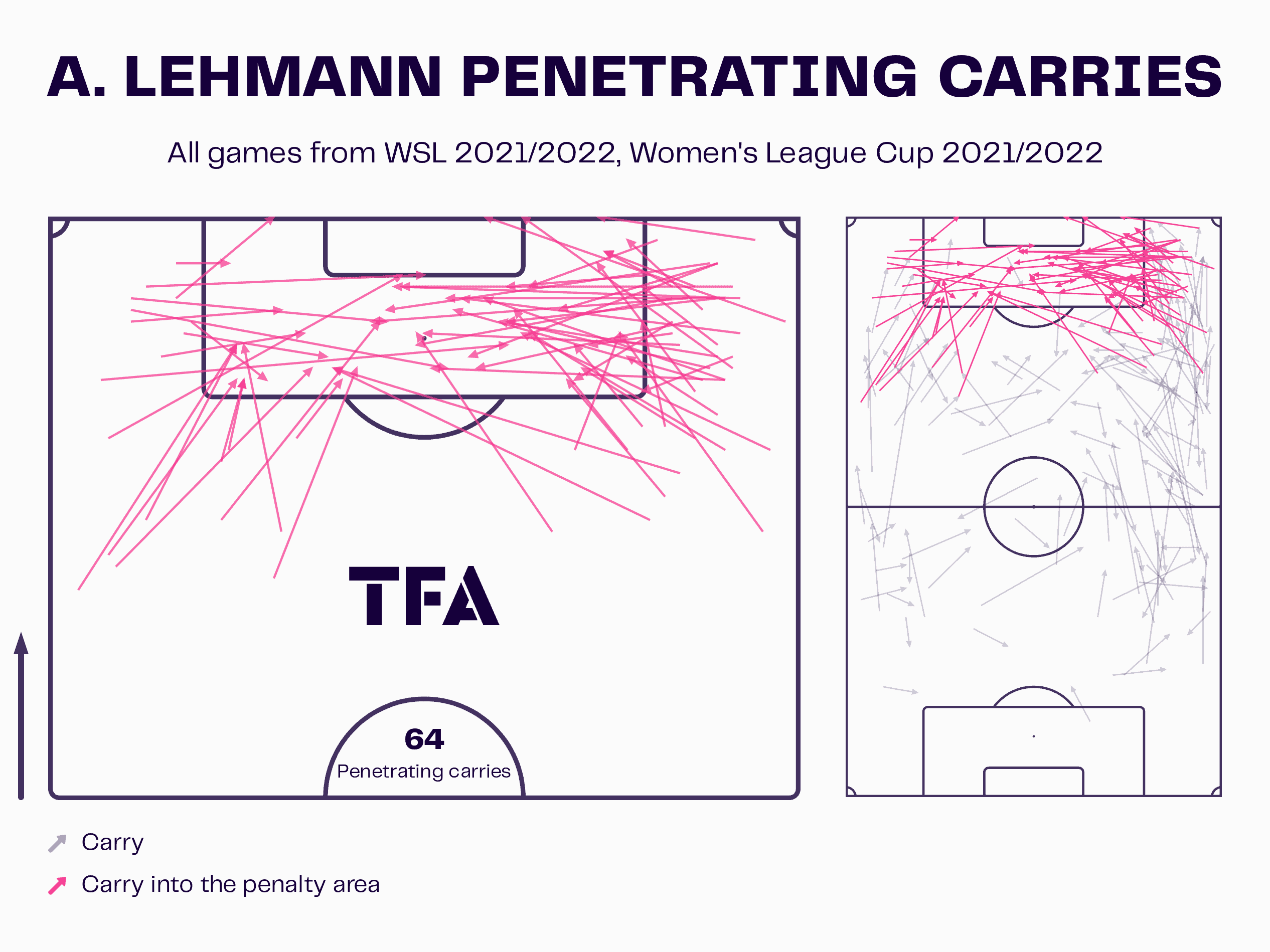
The extent of Lehmann’s contributions during her first campaign at the Poundland Bescot Stadium (as it is now known) is indicated in this graphic, and it is clear just how adaptable she was as a player, with her ability to stay in wider areas and win offensive duels (she was successful in 42.6% of them that season) but also to drive inside when the chances to do so presented themselves.
The fact that she made 64 penetrating carries in all competitions, from both wings and through the middle, was one of the key reasons that Aston Villa were more of a handful under Ward than they had been under previous managers Marcus Bignot and Gemma Davies.
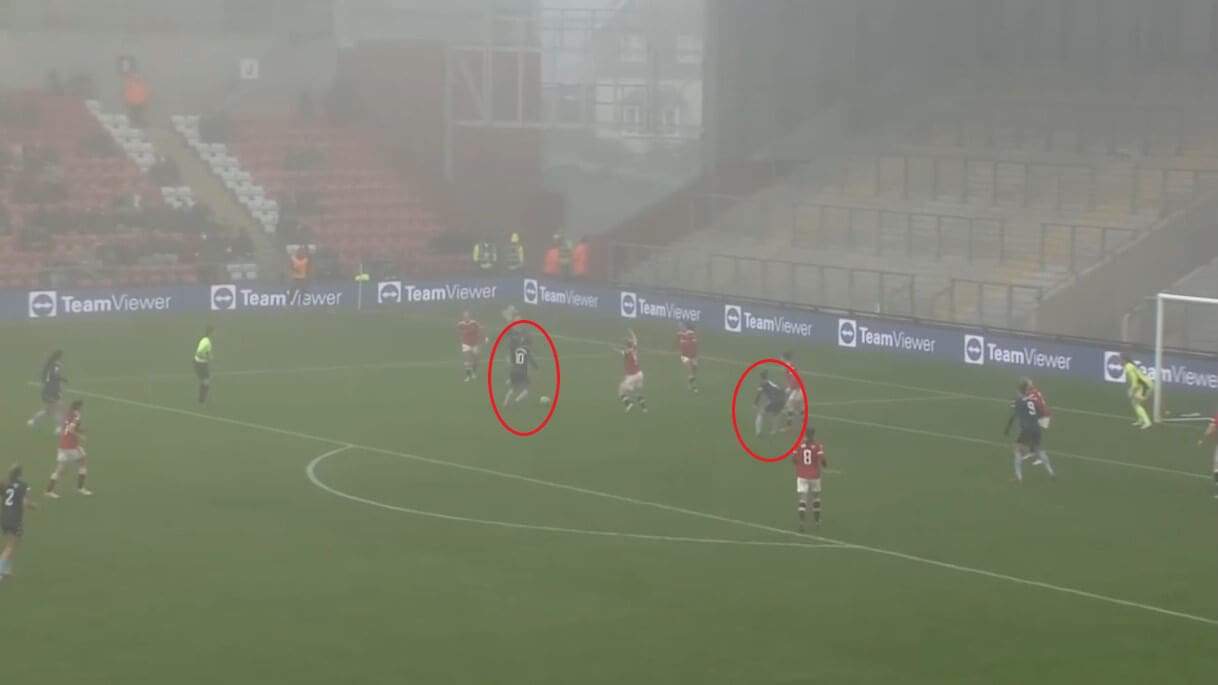
As well as developing the forward options, Ward also sought to introduce a better balance in midfield, with her once again relying on a deep-lying distributor to move the ball around and allow others to push forward and support the attacks. At Sheffield United, she had had Tierney, whilst Murray had held that position at Birmingham, but she opted for former Leicester player Remi Allen in that role at Aston Villa.
It was a sensible addition to make and, in the eyes of Ward, a “no-brainer”, with Allen an experienced player who had demonstrated during her time in the East Midlands that she could operate in a number of different roles in the central third and could offer a threat every time that she got on the ball.
With her confirmed as an Aston Villa player, their more creative players like Ramona Petzelberger were given more licence to stay higher up the field, and that suited the Germany international’s qualities as she is, by trade, a creative box-to-box player who likes to get into advanced spaces and test the opposing goalkeeper.
She did have support in that regard from Allen, who pushed forward more than Tierney and Murray did in her role, as she has here against Manchester United, but Ward didn’t seem to mind that and it was perhaps a sign that she was evolving her tactics and introducing new ideas as she tried to continually modernise her footballing philosophy.

Once they lost the ball, Ward once again asked her players not to press it and to instead focus on team structure, just as she had at both of her previous two clubs. At Aston Villa though, the defending started from the front, with those in the forward line narrowing up and protecting the central areas whilst leaving the wide channels exposed.
This was because Ward wanted to encourage opponents to attack down the wings, with her subscribing to the theory that it is always easier to block crosses from wide areas than it is to end an attack coming through the middle, and it was common to see her players invite their opponents to move the ball into the wide areas whenever they were in these positions as a result, with Gielnik and Petzelberger working together to do just that against Manchester United’s Wales midfielder Hayley Ladd here.
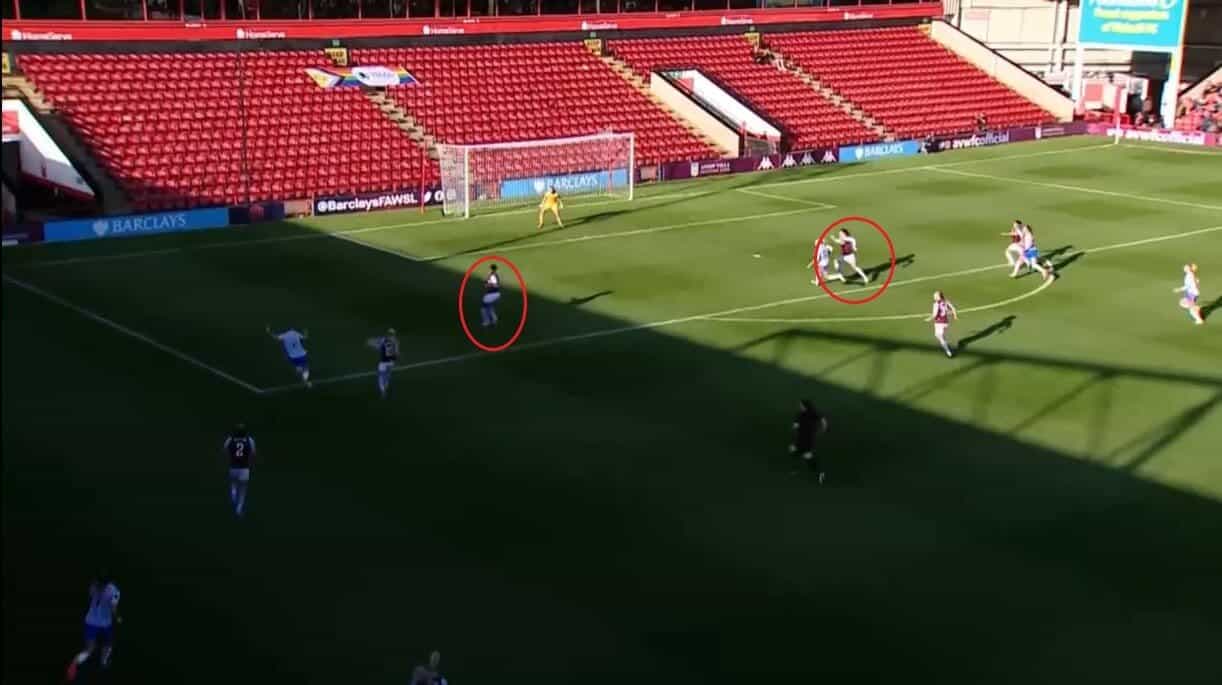
However, there were problems with this way of thinking, in that teams like Manchester United who have a lot of quality on the wings in the shape of Leah Galton and Scotland star Kirsty Hanson (who has spent this season on loan at Aston Villa) will thrive when allowed to progress the ball up the wings.
Nevertheless, with Aston Villa having full-backs who could compete in 1-v-1 duels, just as Ward had had at Sheffield United and Birmingham, they did manage to slow most attacks down and make it difficult for their opponents to successfully find their teammates in the middle.
For those who did manage to bypass that first line of defence, they then had to face Aston Villa’s experienced central partnership of Corsie, who joined the club in January 2022 after leaving Kansas, and Anita Asante, and there were plenty of occasions when those two would work together to win balls early and clear any crosses that came their way. Here, Corsie has read the danger and has moved to meet the ball before Alessia Russo can get on the end of it, preventing the England striker from converting the opportunity.
It was noticeable when one or both of Corsie and Asante were not on the field, because Aston Villa did not look the same team when out of possession and often lacked the same confidence and ability to hold their own, and that was one of the main reasons that they ended up letting in 1.74 goals per game.
However, the fact that they won 64.9% of their defensive duels and 42.5% of their aerial duels did show signs of progression under Ward, with her instilling a stronger mentality and a sense of resilience in her side, just as she had done at Birmingham, and there was definite hope among the fans that they had finally found a manager who could help them to look up the table and not constantly over their shoulders.
Aston Villa Women 2022/23
That hope and faith in Carla Ward’s way of working has undoubtedly been rewarded, with her continually finetuning what was already introduced last season but also adding new elements to the team’s play. She has transformed Aston Villa’s fortunes and turned them into a side on course to finish as “best of the rest”, and the fact that they could still have a major say in who lifts the trophy and who qualifies for Europe is a big compliment to her efforts and the club’s continued belief in her methods.

The key thing about Ward’s first season was that it was about getting the right players in and starting to introduce the basic principles of her brand of football, and whilst the analysis has already shown that there were a lot of positives to their play, they did appear a little stodgy at times as they adjusted to what she wanted from them.
This season, that has been replaced by a more elegant and free-flowing look to their play, with them moving the ball around with more precision and increasing their passing accuracy to 80.5% from 74.8% last season, which shows that they are taking care of the ball more and making it harder for their opponents to make interceptions.
Implementing this has largely come down to their transfer activity, with Ward clearly wanting players who were flexible and who would not stay in one position for the whole game, and the fact that she managed to sign high-profile names like England striker Rachel Daly from Houston Dash and France international Kenza Dali from Everton, as well as Jordan Nobbs from Arsenal in January, shows her clarity of thought when diving into the player market and her ability to find the right players to match her specific player profiles.
The quality that has been added to the squad both before and during the campaign has rubbed off on the rest of the squad too, allowing them to play with the same mentality and character, and the result is that many aspects of their game have looked much improved this time around.
Their transitions, in particular, have at times been a work of art, with them constructing a series of one-touch passes and working together to move the ball into dangerous areas of the pitch at speed, as is demonstrated here by the quartet of left-back Maz Pacheco, Nobbs, Daly and winger Freya Gregory against Leicester.
When watching them play with this level of detail and effortlessness, it is not hard to see why they have scored an average of 1.96 goals per game, compared to 0.85 last time out.

The fact that no player in the midfield or forward areas has a fixed position has also enabled greater tactical flexibility, with Aston Villa this season able to switch seamlessly between playing directly and moving the ball through the thirds. This is another reason why opponents have not been able to contain them as much as they did last season.
In this game, Reading were doing their best to prevent the ball from travelling upfield and so Laura Blindkilde Brown, who is another to have significantly benefited from the new style, has opted to make an aerial pass instead, and this shows the increased levels of intelligence that so many players at the club now have.
This should not come as a surprise, given that playing smart football and knowing what to do in different situations is something that Ward has constantly demanded at all of her clubs, but the fact that she has now successfully instilled it into her current players shows just how much they are buying into her ideas and are now reaping the rewards from doing so.

There were also some defensive changes that Ward needed to make in the summer, which were forced, with Asante retiring from the game at the end of the campaign and leaving a big hole at the heart of Aston Villa’s defensive line. Again, Ward did not worry and instead went out to find the right player to fill it, with former Everton captain Danielle Turner being added and bringing her experience of the league and leadership skills to the table.
As the season has gone on, Turner’s signing has proven to be yet another astute piece of business, with her showing a desire to engage in duels and continually work hard to stay between the ball and the goal.
Her ability to play as a centre-back or a left-back has also helped, with Ward reverting to the back-three shape that was so successful for her at Sheffield United and trying to give those on the outside of the line the opportunity to move out and win possession for the team, and that is clear to see here as Turner gets tight to Brighton and Hove Albion Women’s England forward Katie Robinson and prevents her from moving any further up the field.
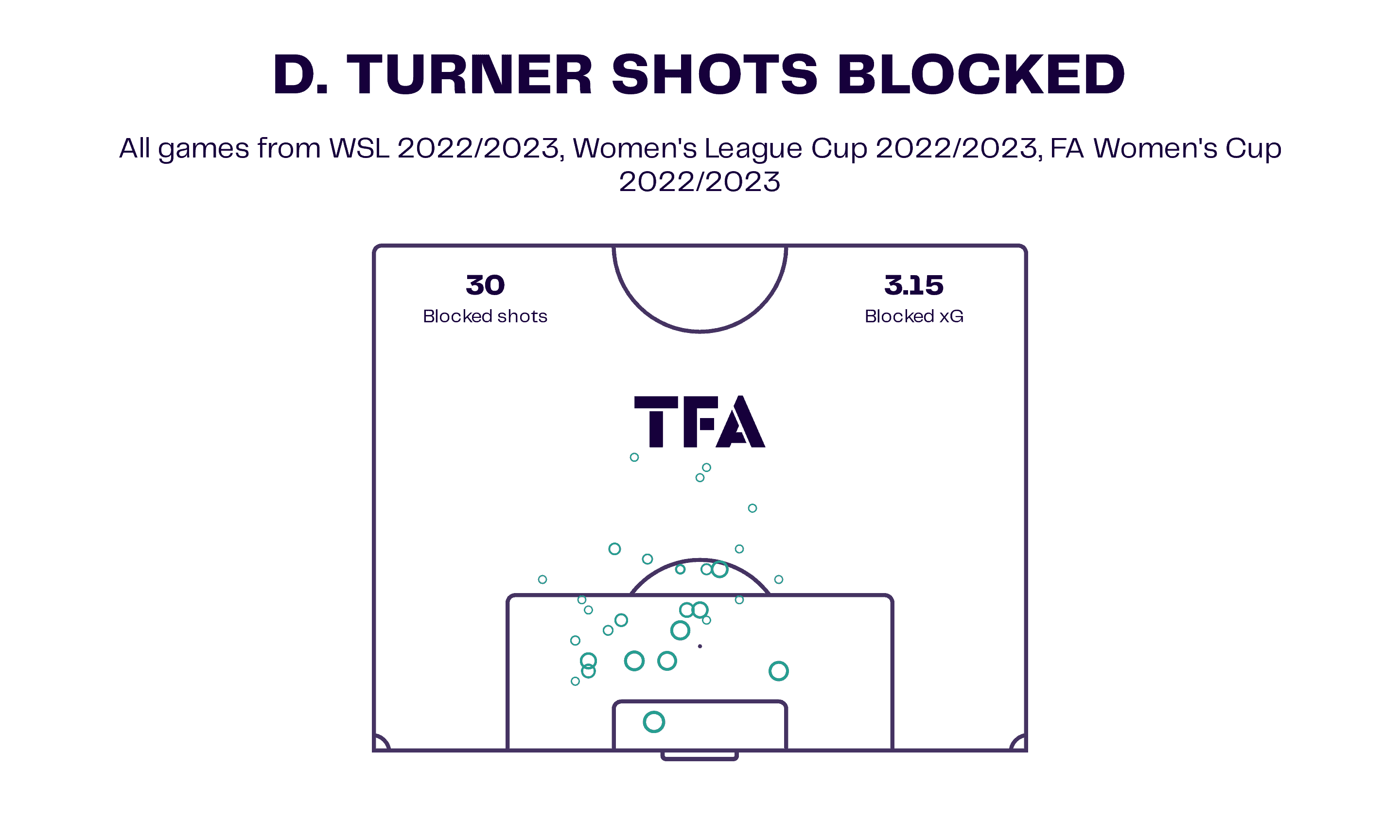
This graphic shows that situations like this are not uncommon in Aston Villa’s games, with Turner proving to be one of the toughest defenders to beat in 1v1s in the league, having successfully blocked 30 shots in all competitions at an average of 3.15 per game, and the fact that she has won 65.5% of her individual defensive duels and 61.6% of her individual aerial duels demonstrates how formidable she is inside her own half of the pitch and therefore how well she has slotted into the gap left vacant by Asante.
Aston Villa as a team have only conceded 1.42 goals per game this season and have won 62.1% of their team defensive duels, and one of the reasons for that is Turner’s strength and leadership, and the fact that they are so difficult to beat is once again down to Ward, who continually works hard to make sure that her team has everything that they need to be robust and to keep their opponents’ chances to a minimum.
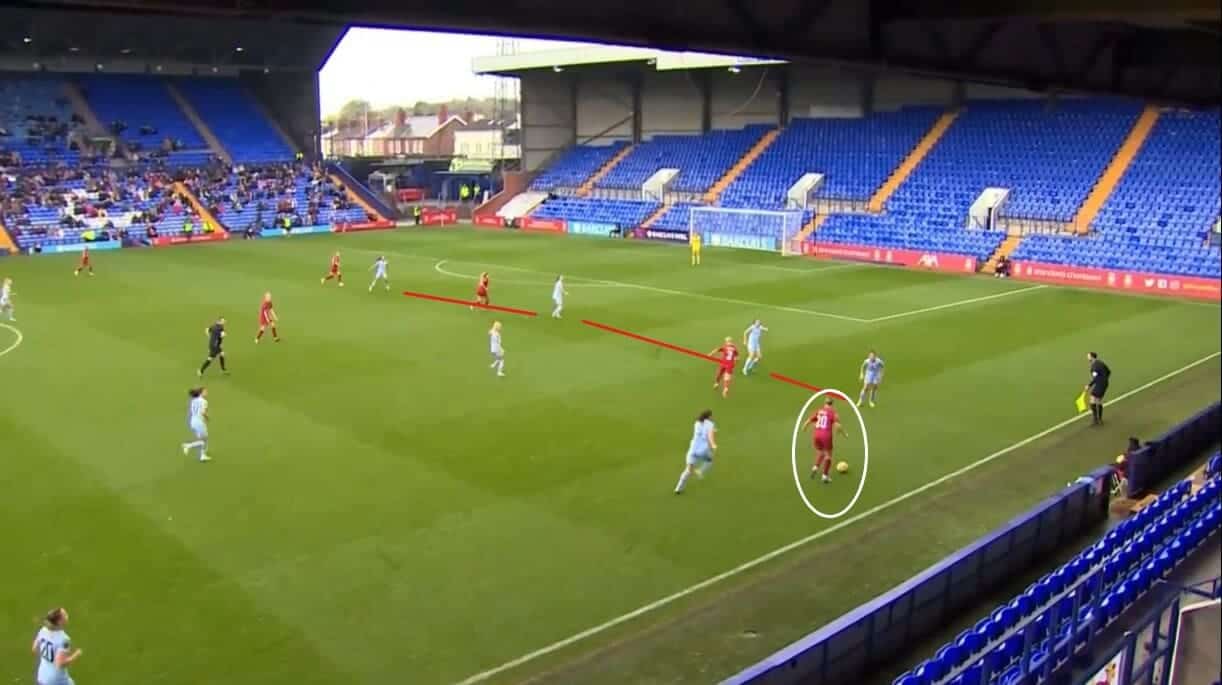
The organisation and hard work that has gone into that defensive strength is also shown in the way that the back line moves across the field in tandem and continually works together to make it as difficult as possible for the opposing side to breach them. Here, with Liverpool’s Belgium forward Yana Daniëls in possession on the nearside of the field, Aston Villa’s line has come across and is now almost hugging the touchline, with only a small gap open for Daniëls to attack through and therefore making it difficult for her to progress any further up the field.
As a result, she is forced to move the ball into the middle, which is where Aston Villa can come forward and clear it, and the fact that they have done this on numerous occasions and on both sides of the pitch indicates how well-drilled they are and how Ward has ensured that, as was the case at both of her two previous clubs, each player knows their roles and the team works together to get results.
Conclusion
In conclusion, this tactical analysis has sought to present an overview of Carla Ward’s tactical philosophy and evolution, with the analysis beginning with her time as Sheffield United manager and then going through her seasons at Birmingham and Aston Villa.
What has been evident throughout is that she has a clear idea of what she wants from her players and has very high standards that she constantly seeks to maintain. The fact that she is known for working hard every day of the year, on and off the training ground, for the good of the players indicates her dedication and loyalty to her squad and her passion to help them improve.
It is for this reason that so many in the game rate her highly, and if Aston Villa continue to improve under her stewardship, then it surely won’t be too long before one of the current top four sides in the WSL comes calling and she may be faced with another tough decision to make.
For now, though, she is doing a great job in the second city and is clearly enjoying being part of the project there, and it is clear that the players and fans love her too and will want her to stay for as long as possible.




Comments